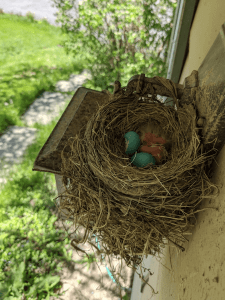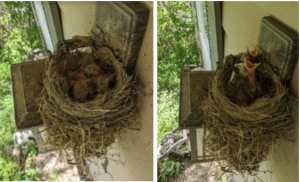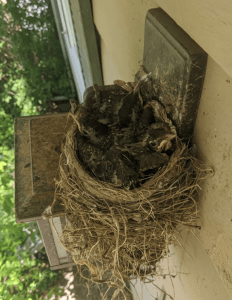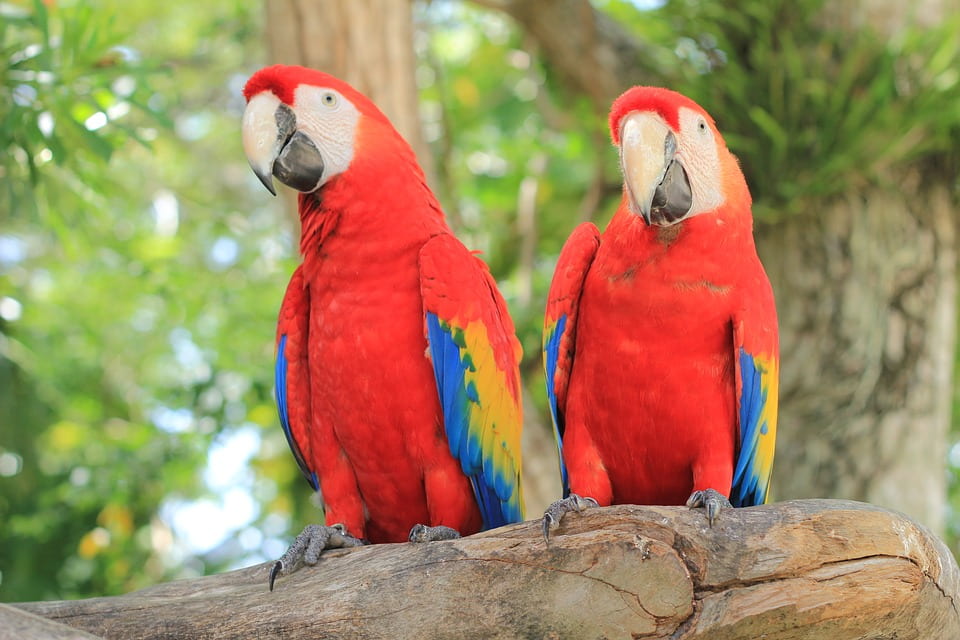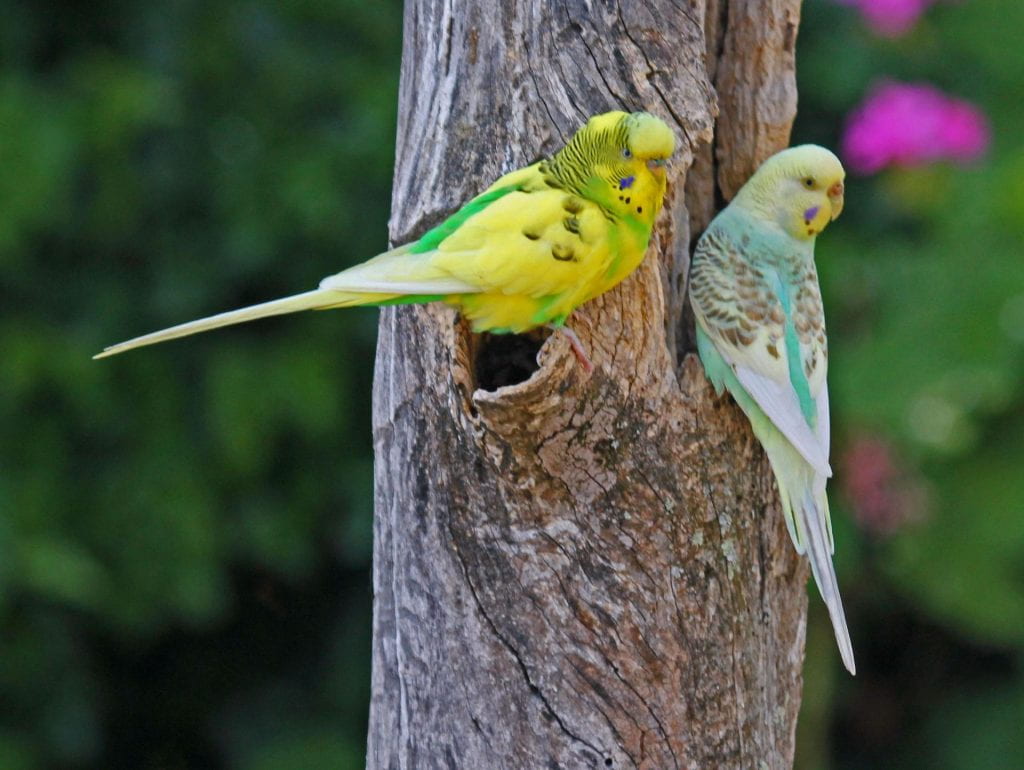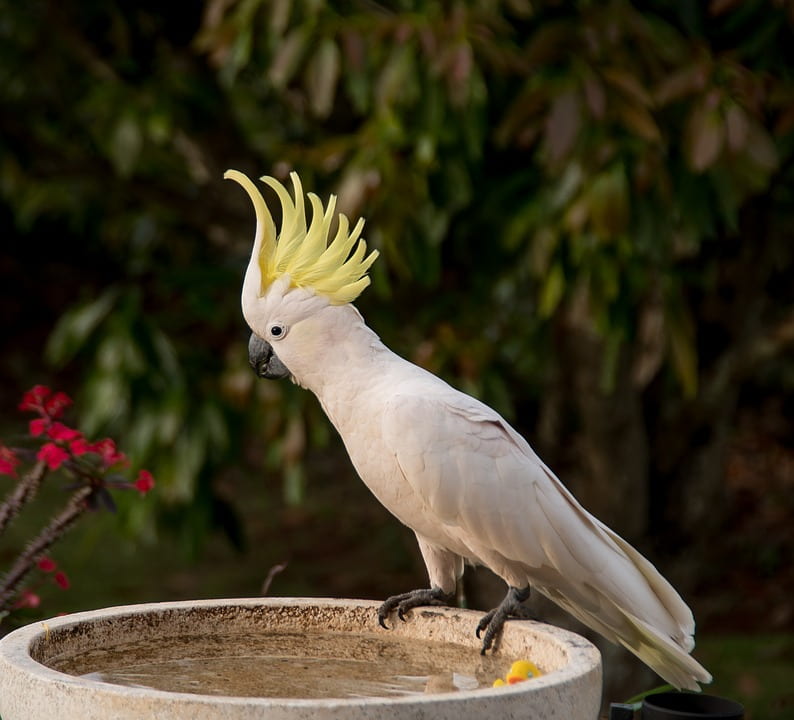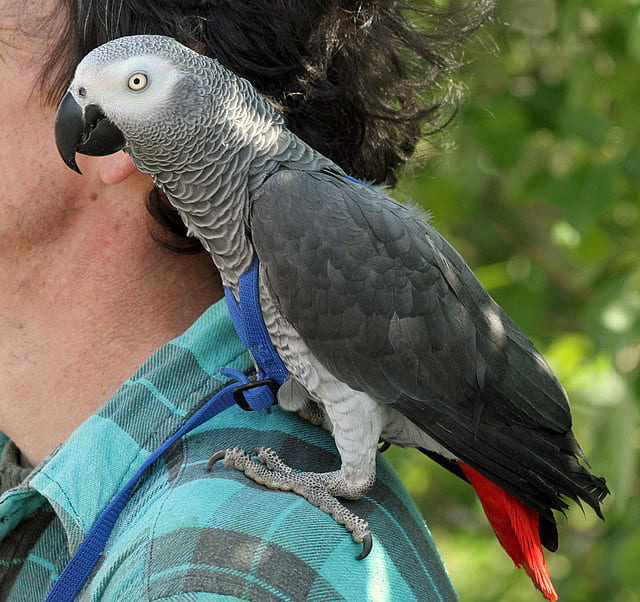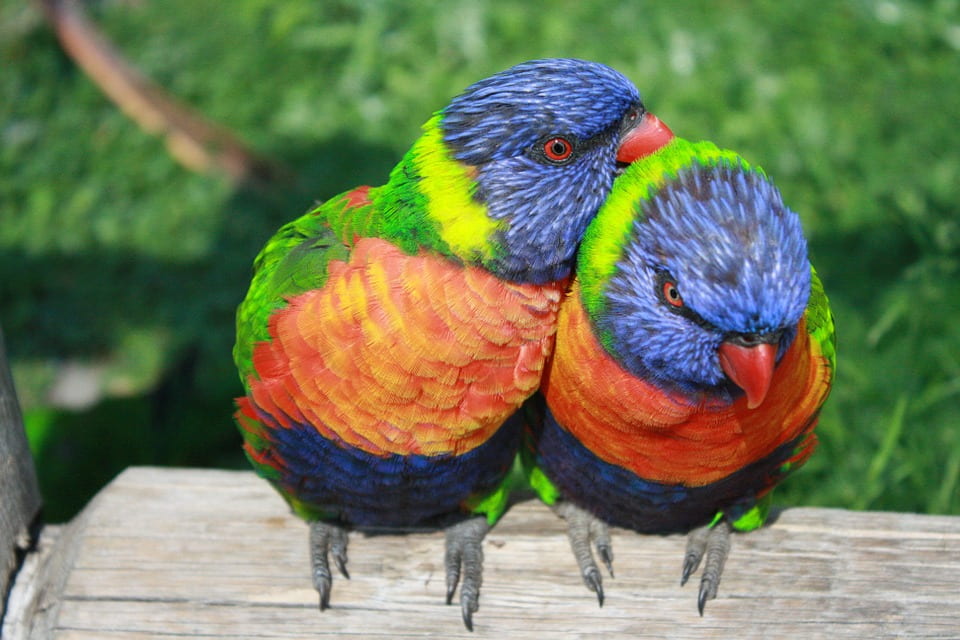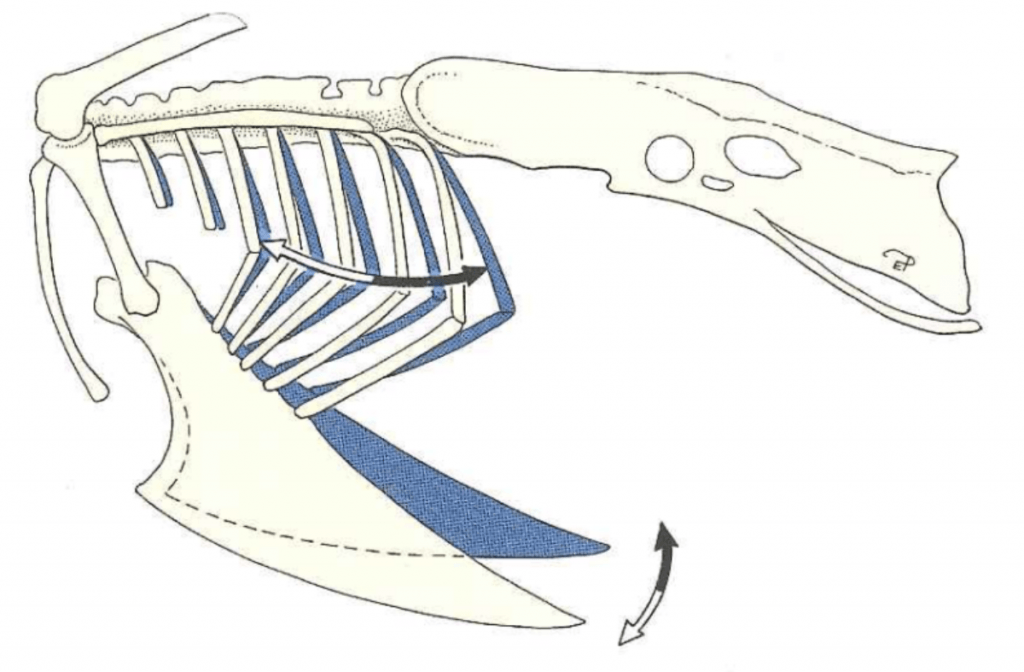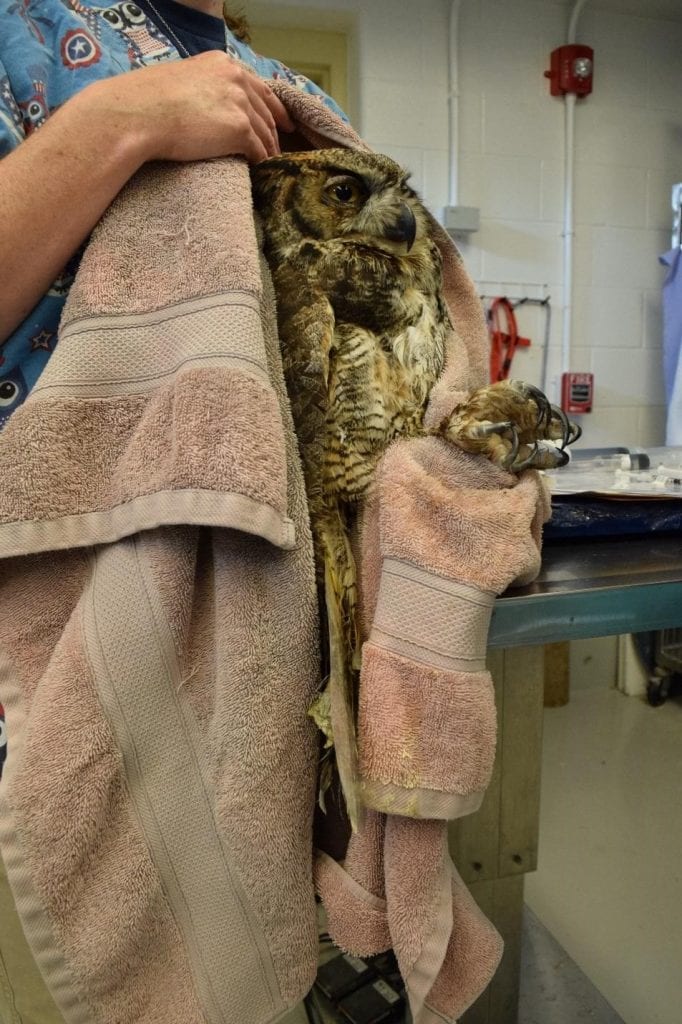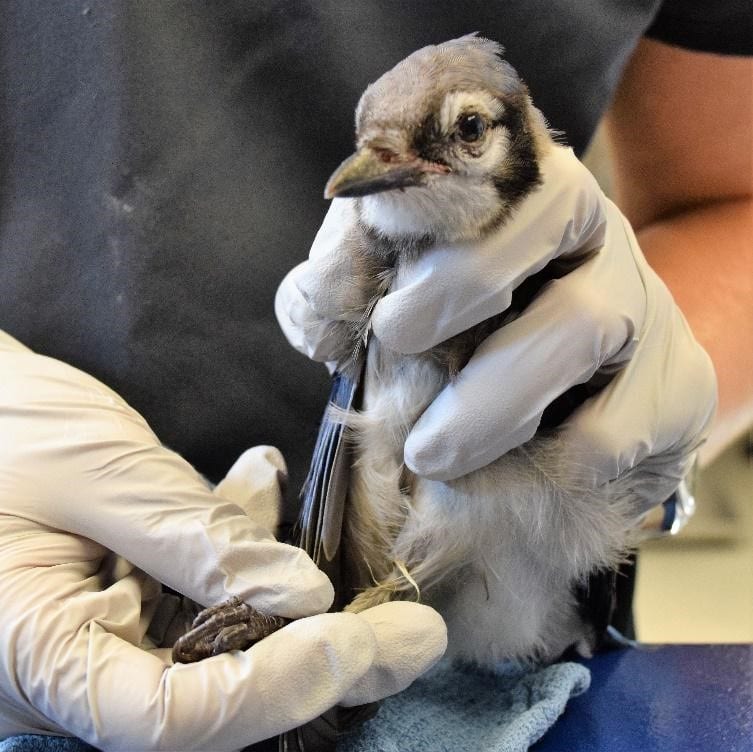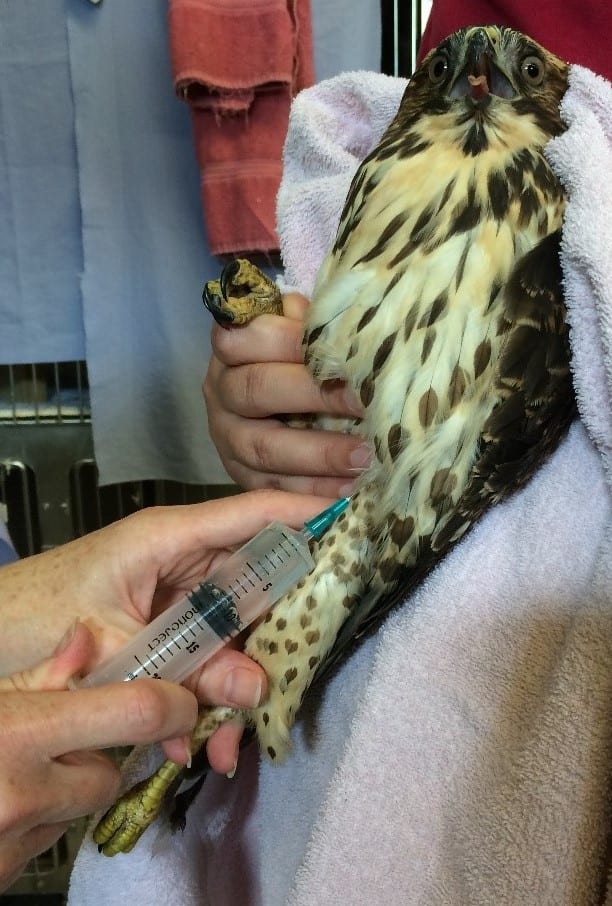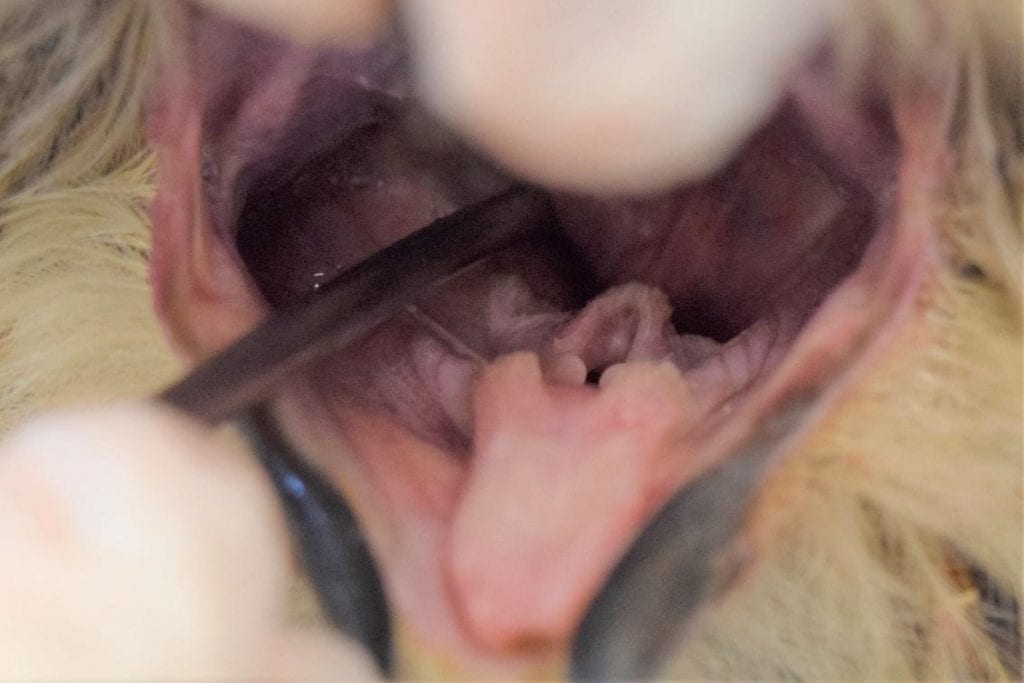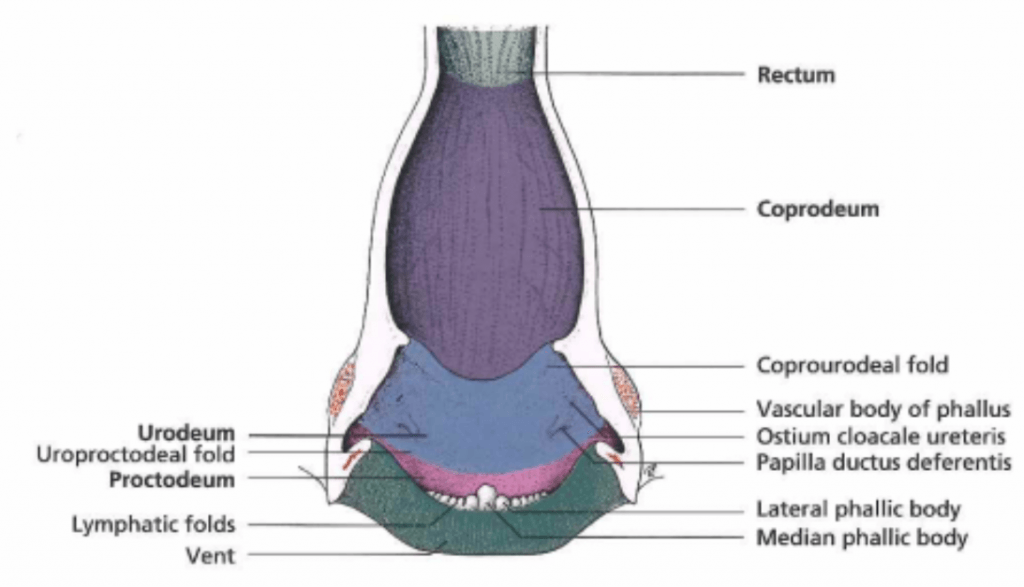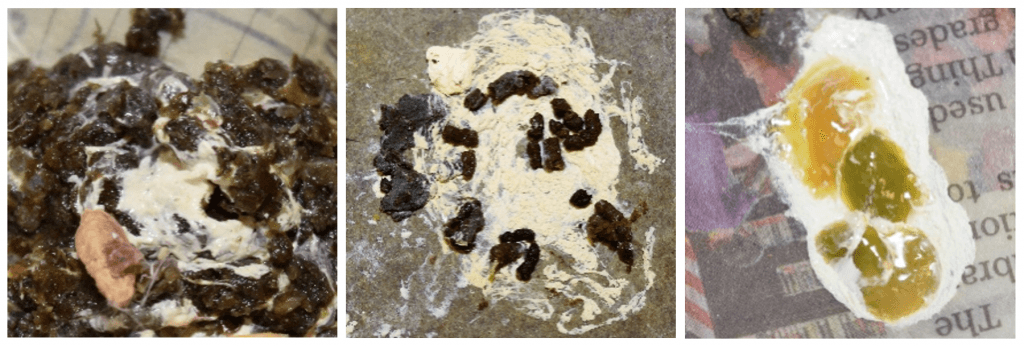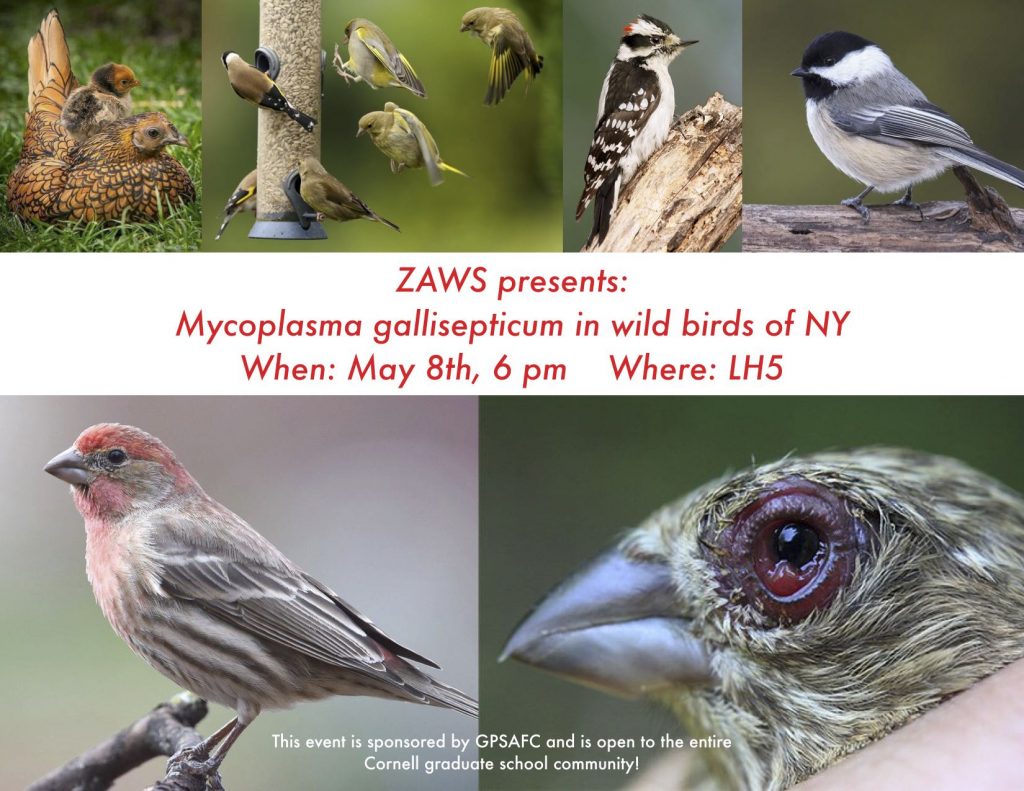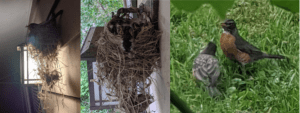
Momma robin sits on her nest at night (left), Escape is futile as a baby tries to see what’s beyond the nest (middle), Momma robin feeding her fledged bird (right)
My mother, a veterinarian with a passion for birds, is my biggest inspiration! She definitely passed on that passion to me. Growing up in suburbia there was always an injured bird that needed care, and my house during the springtime quickly became rehabber central. I remember waking up with my mom every few hours to feed the hungry birds and to rewarm the bottles. I even remember my mom trying to use puppets to feed the birds with some mild success. There are a lot of things that my mom wished our neighbors and community had known so we could have had fewer patients. I hope to share some of our baby bird tips and tricks with you here!
Despite all this snow on the ground we are already dreaming of spring—the warm weather, the green trees, and all those baby birds practicing their flying (key word: practicing). The bird life cycle has several stages: eggs, hatchlings, nestlings, fledgelings, juveniles, and adults. The hatchling and nestling stages are the equivalent of human infant and toddler stages, respectively. Fledgelings are like the tweens and teens of the bird world with juveniles encountering the quarter-life crisis. When a bird is a fledgeling, just like a teen, they start to leave the nest and to spread their wings. During springtime, these birds tend to give people a big scare. People try to help birds struggling to fly, but they don’t know exactly what to do. Sometimes people see these birds and think they’re helpless and will even take these birds in their houses to “nurse them back to health”. We all want to do what’s best for our wildlife, so here are some recommendations for what to do when you find a baby bird out of the nest.
If you see a hatchling bird out of the nest, the best thing you can do is to find the nest. If there are multiple nests in the area, find the one with babies that are closest to the hatchling in age, i.e. they look the same, and gently place the baby back in. These babies cannot survive outside of the nest on their own. The difficulty with these babies is that often the parents push them out of the nest. If this happens, there is probably a problem with the baby that we cannot see, or the parents realize they cannot care for all of the eggs. Putting them back is the best thing you can do for them at this age.
If you see a nestling bird out of the nest, these birds are more independent than the hatchlings but still cannot survive outside of the nest.
So once again, find their nest and gently place them back in it. If these birds are repeatedly found outside of the nest again, it can be for a multitude of reasons including a nest that’s too small, an underlying health problem (for example, the baby may be failing to thrive), or because the baby decided to jump out and spread their wings (or lack thereof). Continuing to put them back in the nest is still the best policy here.
Finally, if you see a fledgeling bird, here’s what to do: these are the most common baby birds that you will find on the ground.Fledgelings (as the name implies) are trying to fledge—develop wing feathers and fly, and therefore leave the nest. The ability to fly requires good muscle strength and lots of practice, so these birds will continuously hop out of the nest and try to fly…and fall…and try again…and fall. These birds tend to spend several days on the ground before they’re able to get back up in a tree or in a nest. So, what do you do? If there are no obvious injuries and no signs of cats (or other predators) in the area, just leave them alone and let nature take its course. The parents are probably keeping an eye on them from afar and are feeding them when necessary so there is no need to provide them with any food. If there are predators around, you should try to get the baby onto a higher surface like a shrub or back into its nest, if possible. If the predator is your own outdoor pet, try bringing them inside until the birds are capable of flight.
One of the biggest misconceptions about interacting with baby birds is that once you touch a baby bird, the parents will smell you on the baby and they won’t take care of it after that. This is false as most birds don’t have a sense of smell and most parents are very happy to have their babies back in the nest. If at any point you find an injured bird (they’re actively bleeding, have an obviously broken wing, are hopping in a circle with a head tilt, etc.) you can always contact your local wildlife rehabber for assistance. So, to summarize: The cardinal rule when finding a baby bird is: when in doubt, put it back in the nest (nestlings and hatchlings) or leave it alone (fledgelings). Stay warm and get Egg-cited for spring!

About Miranda Senft
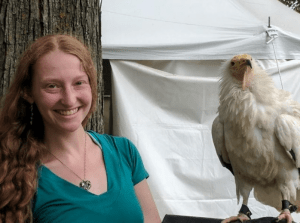 Miranda Senft is a current 3rd year veterinary student at Cornell University College of Veterinary Medicine. She loves small animal and exotics emergency medicine and hopes to become a board-certified criticalist after graduating. She grew up with a mother who has a Master’s degree in Avian Science (and a DVM) so she has always had a passion for birds and grew up rehabbing numerous wild birds brought to the animal hospital. She currently lives in Ithaca, loves going birding, and helps out occasionally with mist netting for research projects. She has a beagle named Ralphie, a cat named Webster, and a very independent and sassy Canary-Winged Parakeet named Macaroni.
Miranda Senft is a current 3rd year veterinary student at Cornell University College of Veterinary Medicine. She loves small animal and exotics emergency medicine and hopes to become a board-certified criticalist after graduating. She grew up with a mother who has a Master’s degree in Avian Science (and a DVM) so she has always had a passion for birds and grew up rehabbing numerous wild birds brought to the animal hospital. She currently lives in Ithaca, loves going birding, and helps out occasionally with mist netting for research projects. She has a beagle named Ralphie, a cat named Webster, and a very independent and sassy Canary-Winged Parakeet named Macaroni.

